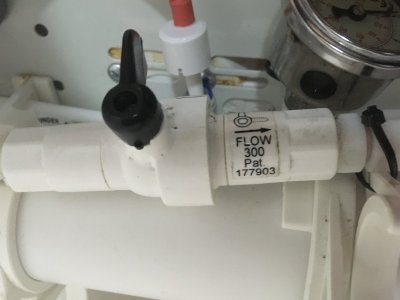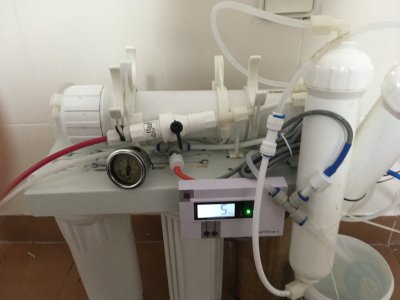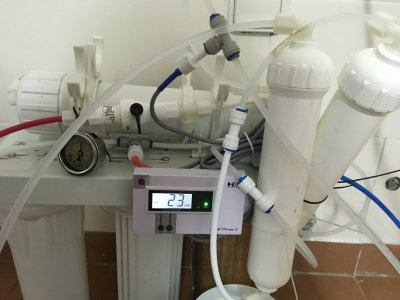Dear reefers.
I am struggling with my RODI unit since I am having difficulties have 0 PPM water output. My system has 1 sediment filter, 2 carbon filters, a membrane and 2 stages for resin. It started as a TMC V2Pure 100 but I later added a second carbon block to it. Finally I add two TMC V2 Pure de-Ionisation Pods (500ml) after the membrane.
To measure the result I am using a HM Dual TDS meter, calibrated with HM 342 PPM solution.
Since I was getting low results (5PPM output) I have decided to replace all filters, one DD Sediment, two DD Carbon, one Filmtec 150GPD membrane and replace the two resin filters with new FaunaMarin MB 20 resin.
Right away my TDS output went down to 0PPM, unfortunately 50 gallons later, my TDS went up to 5PPM again.
Is the resin depleted after 50 gallons? I have installed the two resin filter vertically to avoid gaps, and after a few minutes opened the filters again to make sure they were completely full.
My TDS in is about 350PPM.
Any suggestions would be appreciated.
Thank you.
I am struggling with my RODI unit since I am having difficulties have 0 PPM water output. My system has 1 sediment filter, 2 carbon filters, a membrane and 2 stages for resin. It started as a TMC V2Pure 100 but I later added a second carbon block to it. Finally I add two TMC V2 Pure de-Ionisation Pods (500ml) after the membrane.
To measure the result I am using a HM Dual TDS meter, calibrated with HM 342 PPM solution.
Since I was getting low results (5PPM output) I have decided to replace all filters, one DD Sediment, two DD Carbon, one Filmtec 150GPD membrane and replace the two resin filters with new FaunaMarin MB 20 resin.
Right away my TDS output went down to 0PPM, unfortunately 50 gallons later, my TDS went up to 5PPM again.
Is the resin depleted after 50 gallons? I have installed the two resin filter vertically to avoid gaps, and after a few minutes opened the filters again to make sure they were completely full.
My TDS in is about 350PPM.
Any suggestions would be appreciated.
Thank you.





















